Did Mercy Hospital Lebanon Let a 22 Week Old Baby Die
Getty Images, Mikhail Grachev/МАММ/МDF, Annal photograph
It took the city emergency services a fiddling more than two weeks to prevent the deadly virus from escaping beyond Moscow and spreading throughout the entire Soviet Union.
On December 23, 1959, a man stepped off an airplane arriving in Moscow from Delhi, who would soon inadvertently identify the capital of the USSR in great danger. Artist Alexei Kokorekin could not accept imagined that he had brought smallpox from India.
Variola vera, natural or smallpox, was i of the deadliest diseases to take ever affected humankind. It wiped out entire villages, cities and fifty-fifty entire countries. In the 8th century, it killed xxx percent of the population of Japan and in the 16th century, millions of native Americans, who contracted the virus from conquistadors.
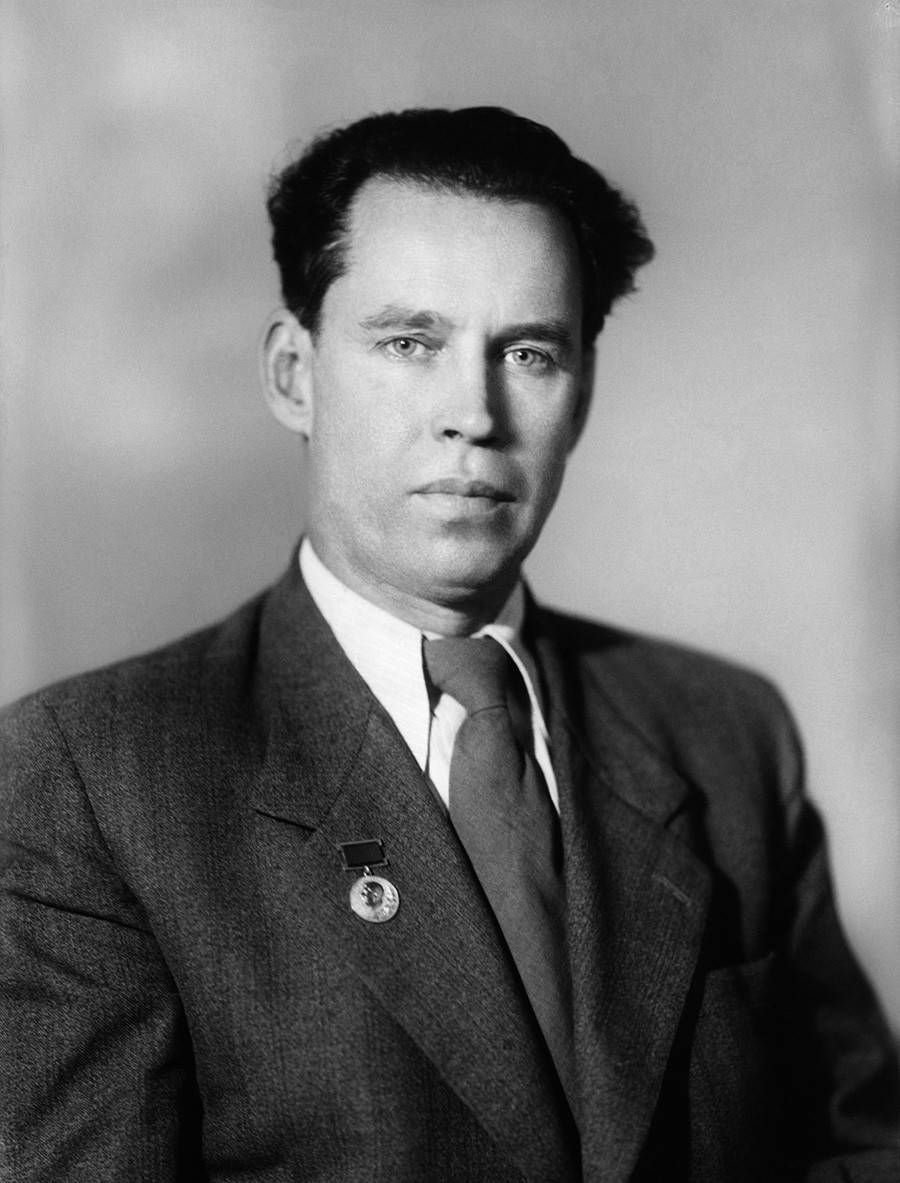
Alexei Kokorekin.
Grigory Vail/TASS
The Soviet Union took long and concerted efforts to fight smallpox. If in 1919, the number of people infected with the disease was estimated at 186,000 across the country, past 1936, the figure was nada. All the same, 23 years on, the unsafe affliction that everyone had forgotten about was dorsum.
Patient zero
Upon arrival, Kokorekin had symptoms of a modest cold, which – given information technology was December – seemed quite normal to him. However, already in the evening of the same twenty-four hours, his temperature jumped upward, he developed a potent cough and ached all over his body.
A doctor whom he went to run into the next 24-hour interval diagnosed the flu. However, the medications that Kokorekin was prescribed did not help. He developed a rash all over his trunk, which the doctors took for an allergic reaction. Only a young intern, having learned where the artist had arrived from, cautiously suggested that it may be smallpox, but her proposition was laughed off by more than senior doctors.
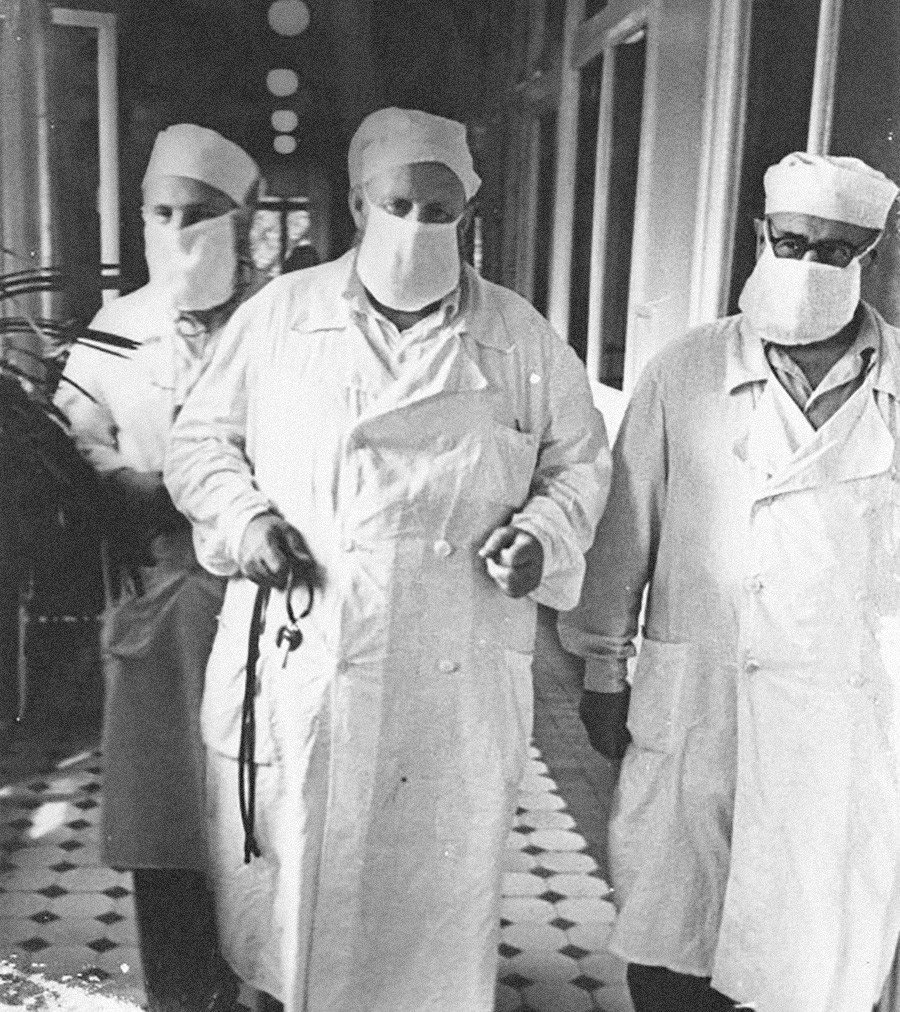
On December 29, having spent several days in a ward with several other influenza patients, Alexei Kokorekin died. The doctors never figured out what had actually killed the strong 53-yr-old man. Shortly after, New year preparations and celebrations pushed that tragic incident from their minds.
Beginning of the epidemic
Withal, Kokorekin's decease was not the end of information technology. In the 2d week of the new twelvemonth, several patients of the hospital adult the same symptoms: fever, coughing, rash.
It was no longer possible to have any more risks. Specialists from the Enquiry Institute of Vaccines and Sera were called in. Their conclusion came as a shock: Moscow had an outbreak of smallpox.
It turned out that during his trip to India, Alexey Kokorekin had attended a ceremonial burning of a deceased Brahmin and had even touched his things. It was there that patient aught contracted the deadly disease.
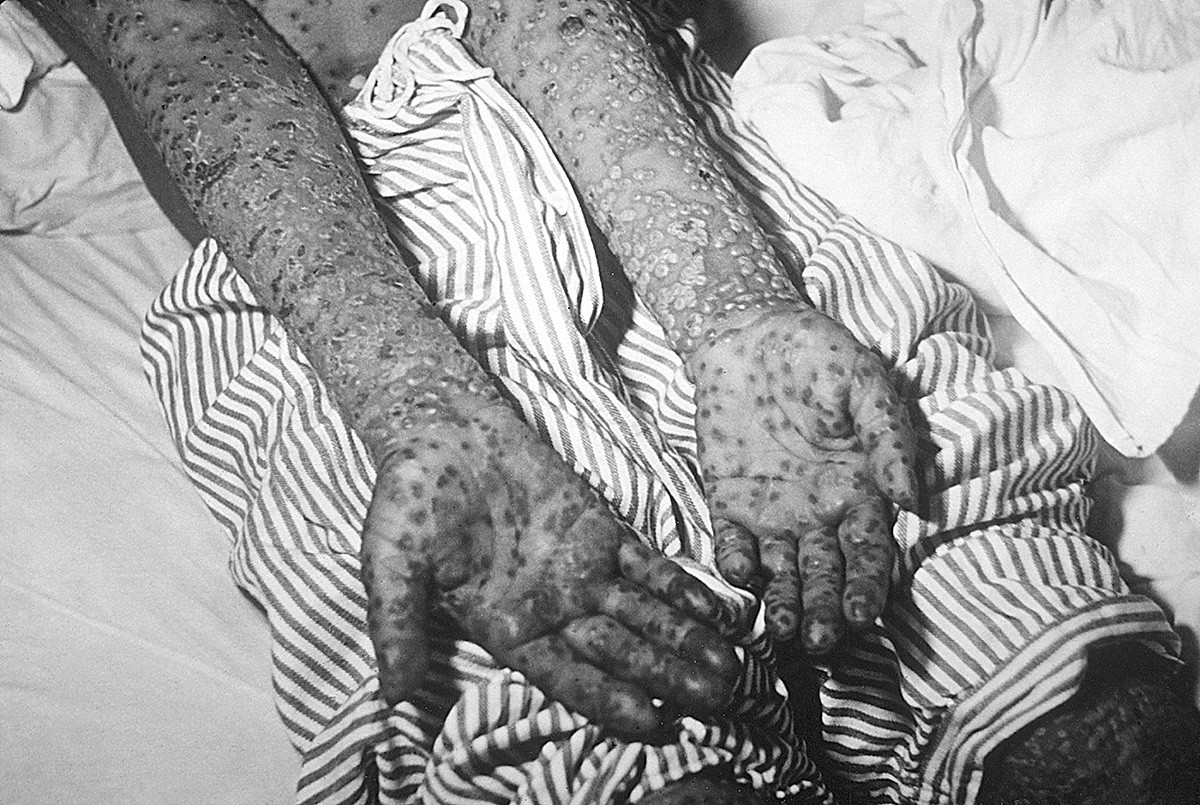
Unprecedented measures
On Jan 15, the news of the smallpox outbreak reached the country's leadership, who immediately mobilized all the resources of Moscow hospitals, clinics, police departments and the KGB. A search for potential carriers of the dangerous virus went on round-the-clock.
Everyone whom Kokorekin had met and spoken to, whom his relatives had been in contact with, who had received his gifts from India were quarantined. Thus, 150 students from the university where his girl Valeria was studying were taken to hospitals straight from lectures.
From primary contacts, the search progressed to secondary contacts then on, until the whole concatenation was established. People were taken off trains and airplanes that carried potentially infectious people were ordered to turn back mid-air.
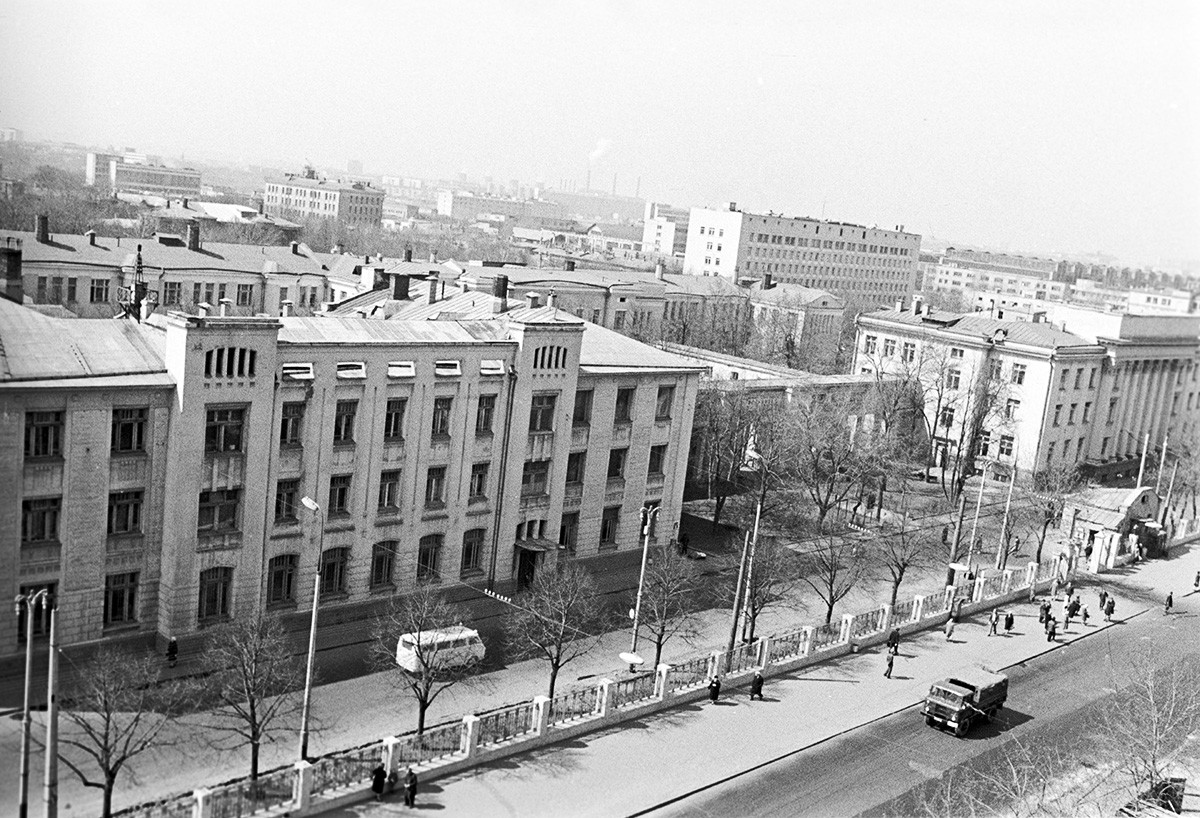
Botkin Hospital.
Viktor Chenov/Sputnik
A total of ix,342 people were placed under quarantine. The Botkin Hospital, where patient zero had spent his concluding days, was in lockdown. Since there was not enough linen for thousands of doctors and patients trapped inside the infirmary, by a special decree, the emergency state reserve, intended for the consequence of a war, was allowed to be used.
Eliminating the threat
A decisive measure in preventing the spread of smallpox was universal vaccination of all residents of Moscow and Moscow Region - adults, children and even those who were dying. Literally within a week, more than nine.5 million people were vaccinated - an unprecedented instance in history.
To cope with the job, all medics were mobilized, from paramedics to medical students. "It was truly heroic," says virologist Svetlana Marennikova, Doc. "Epidemiologists worked from forenoon to night."
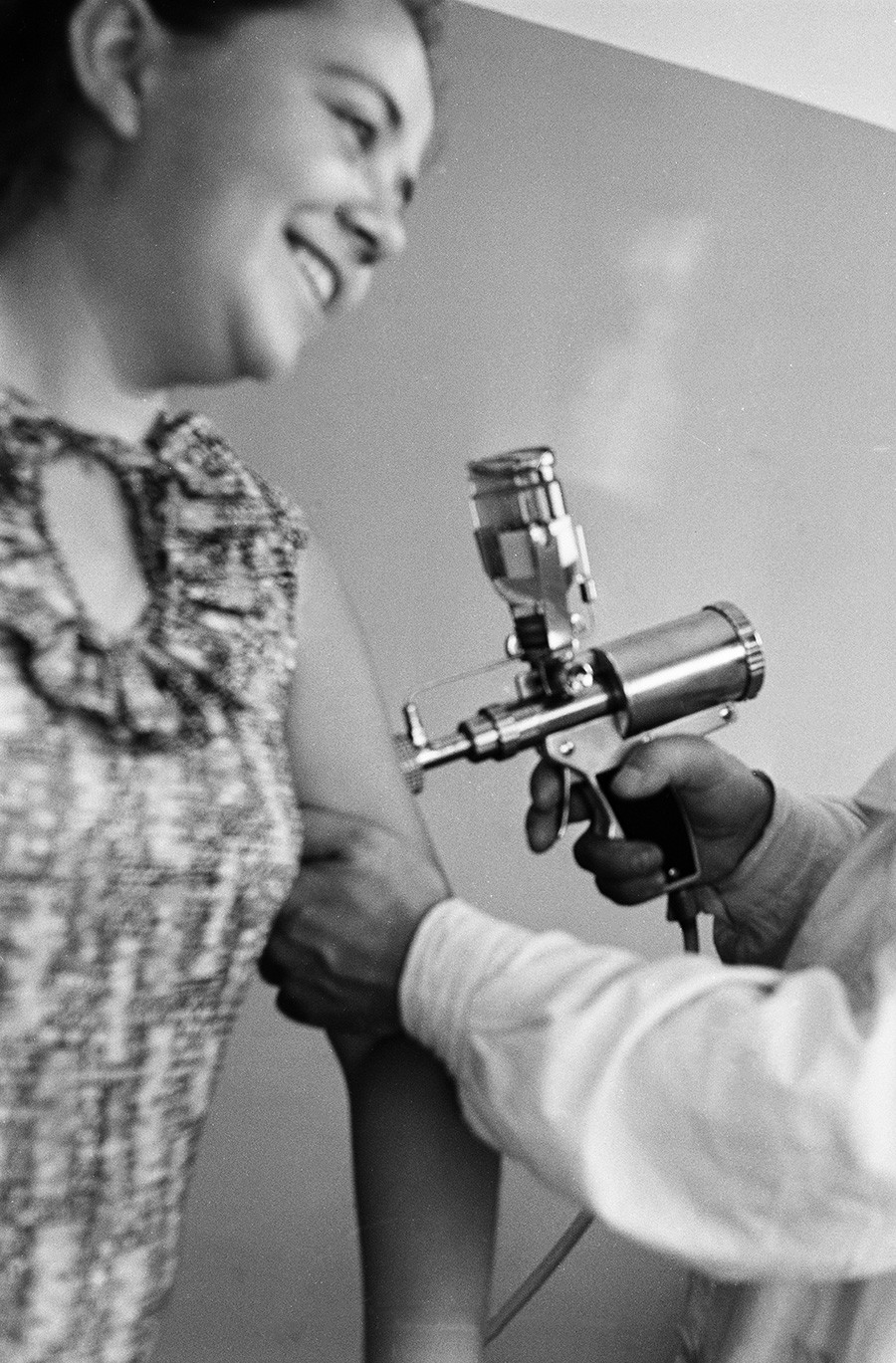
In total, 45 people in Moscow were diagnosed with smallpox, three of whom died. By February 3, the affliction had been eradicated. A timely and well-coordinated response from the Moscow police force-enforcement and medical services helped finish the mortiferous virus in just 19 days.
If using any of Russia Across's content, partly or in full, always provide an active hyperlink to the original material.
Become the calendar week's best stories straight to your inbox
alexanderrismustriog.blogspot.com
Source: https://www.rbth.com/history/331857-how-ussr-defeated-black-smallpox
0 Response to "Did Mercy Hospital Lebanon Let a 22 Week Old Baby Die"
Post a Comment